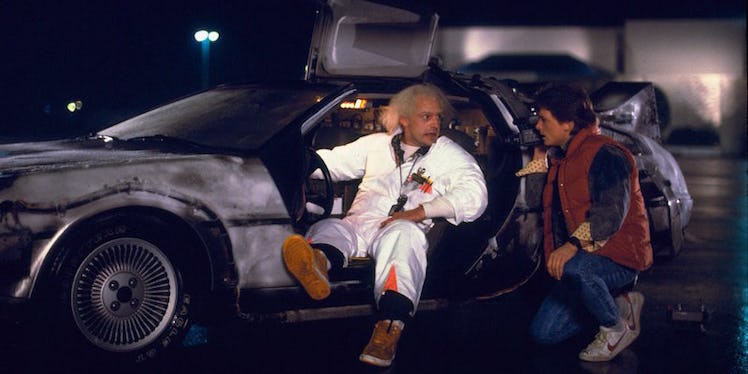
We Might Have The Ability To Time Travel A Lot Sooner Than You Think
A recent breakthrough has scientists believing time travel might be closer than previously thought.
Last week, it was revealed scientists at the LIGO, the Laser Interferometer Gravitational-Wave Observatory, detected gravitational waves for the first time, proving a key aspect of Einstein's theory of relativity.
These waves were essentially ripples from a collision of two gigantic black holes. This mergence occurred about 1.3 billion light-years away, in a time when Earth was populated by only single-cell organisms.
LIGO researcher Kip Thorne quickly dismissed the notion the discovery was a step toward traveling in time.
In a press release, he reportedly said,
I don't think [our detection of gravitational waves] is going to bring us any closer to being able to do time travel.
But, Princeton University theoretical physicist David Spergel suggested the team tremendously undervalued the significance of proving Einstein correct.
Einstein's theory of relativity proposed the idea large objects exerting massive gravitational force bend the fabric of space-time, which is comparable to bringing the end of a mile closer to a runner.
Professor Spergel told The Daily Beast the LIGO researchers, in detecting evidence of Einstein's theory, also uncovered the foundation for time travel.
He said,
There are still a lot of ifs there, starting with the existence of negative mass particles and wormholes being stable. But general relativity's equations—which gave us black holes, and we see very strong evidence for them with LIGO—are telling us that that would permit time travel.
Edwin Turner, another Princeton astrophysicist, seemed to agree, but only if the gravitational fields involved were unbelievably strong, which tends to be the case with objects as massive as black holes.
The effect would be similar to dropping a dumbbell into a leg of panty hose, making the material stretch so much the two sides of the leg, or two points in time, touch.
Turner explained,
Trajectories through space-time have to be bent enough that they can close back on themselves—strong gravitational fields strongly distort the fabric of space and time. If the field is strong enough and complicated enough, there can exist paths through that distorted space-time that intersect themselves at different times—meaning you could travel along a path that connects points in the future to points in the past.
Spergel estimated it will be at least another 50 years before the next step toward inventing time travel is discovered.
This is reportedly the usual pace, however, in which one major advancement in astronomy follows another.
But whatever team produces the most crucial mechanics for this goal, Spergel said, likely will not have been able to without the LIGO breakthrough.
Citations: Hold Up, Did We Just Crack Time Travel? (The Daily Beast)